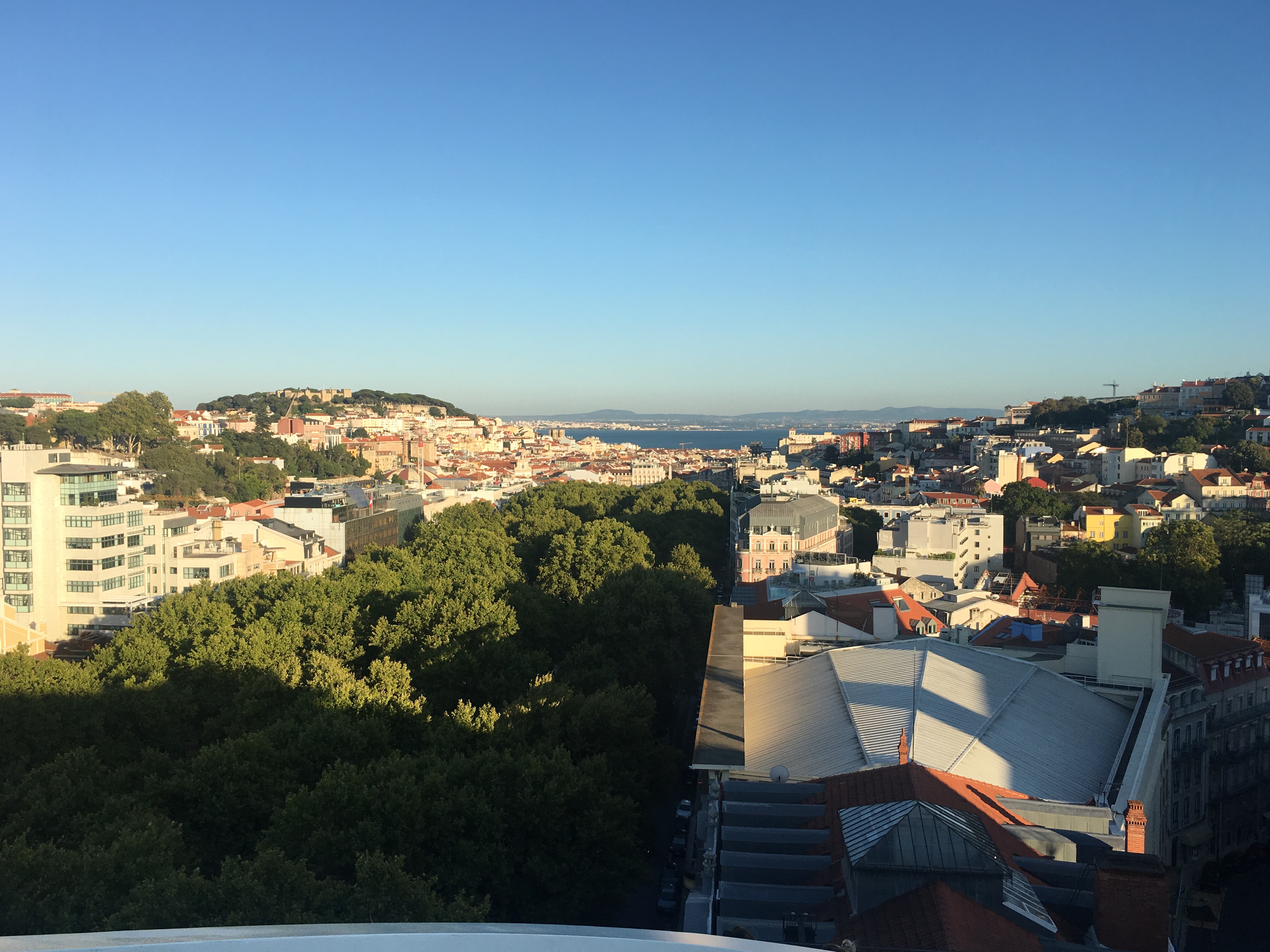
I had a feeling as we were flying to Lisbon that I would love this place!
Coming into land across the bright blue water, big sky and the bright white buildings with red rooves I was certainly getting a positive impression.
Through the modern and busy airport and then onto our hotel, just behind Lisbon’s ritzy shopping street. I really was thinking “How good is Lisbon?”
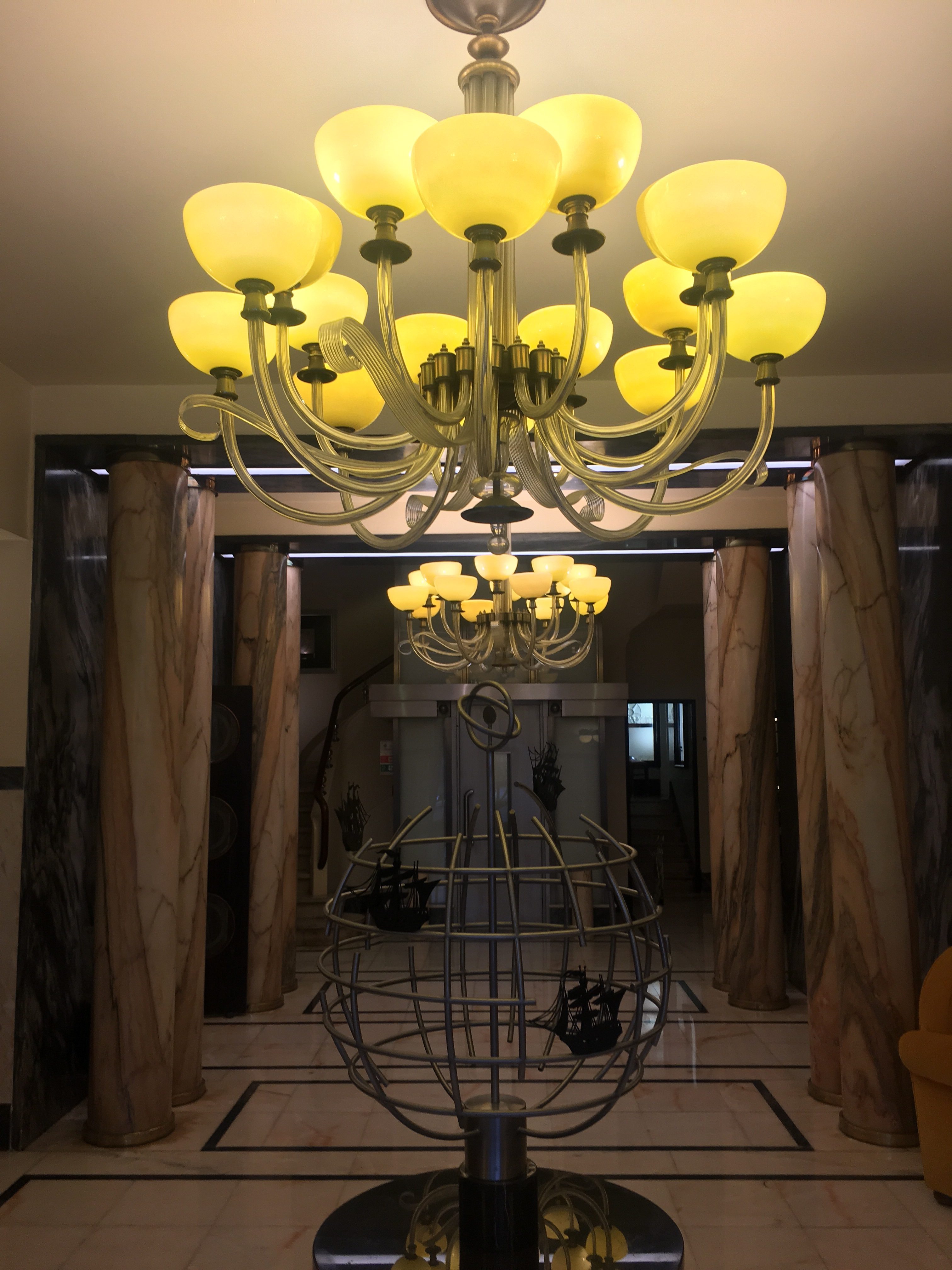
Hotel Britania Reception
When we checked in and were told that “tea” was 5-9pm everyday. Tea included complimentary Portuguese tarts, tea, and Port. I was now certain that I was going to love Lisbon.
I knew the significance of Portuguese tarts and Port to Portugal but not tea. Tea was a drink of the nobles in Portugal. A benefit of Portugeuse exploration of Japan and China. It was the Portuguese, via Catherine of Braganza, the Portuguese wife of King Charles II that introduced tea to England. The Portuguese as others do also refer to tea as cha.
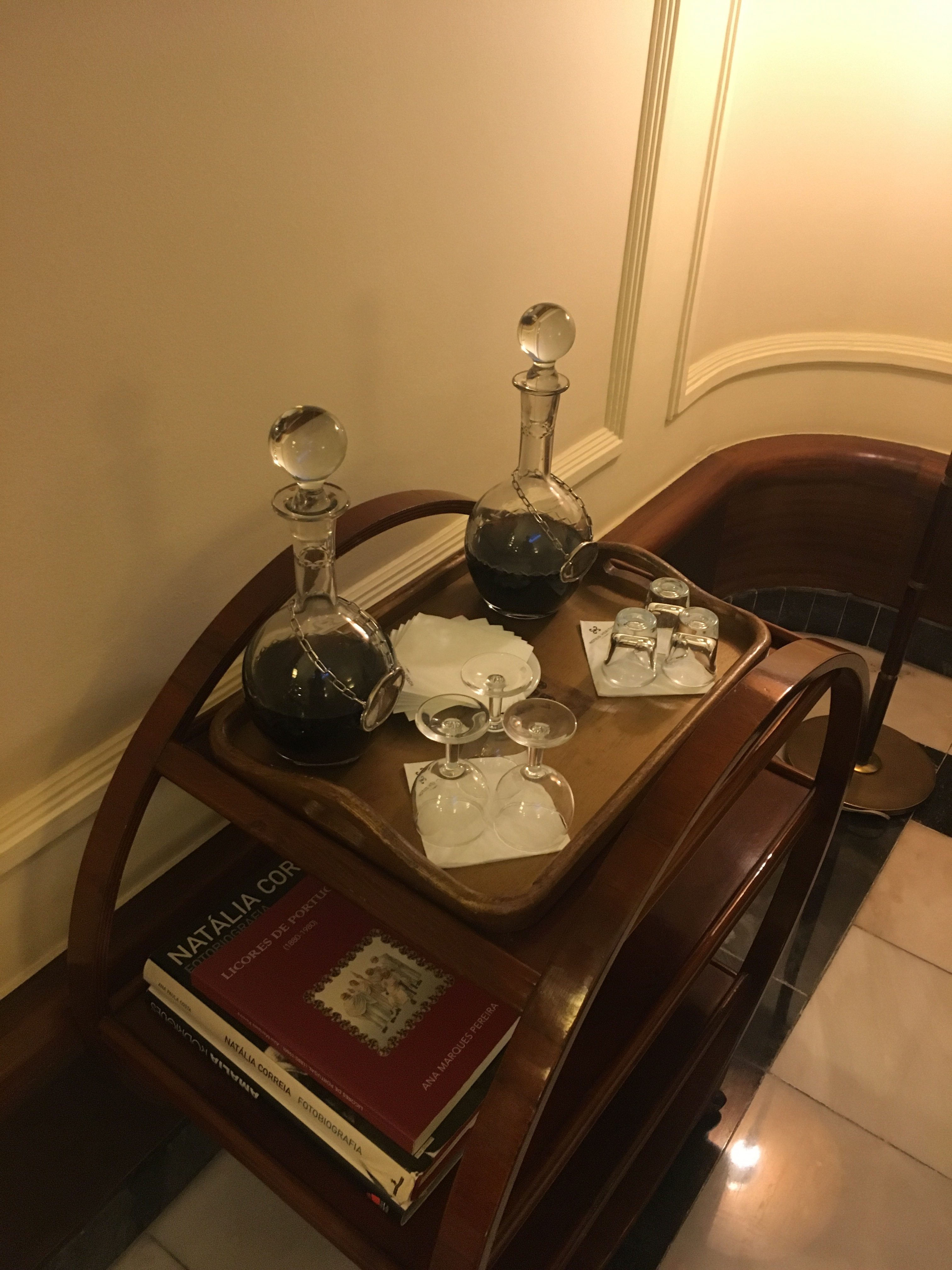
The cherry port was very nice
Our hotel, the Hotel Britania (previously known as the Hotel do Imperio) was a delightfully restored Art Deco hotel. The entrance foyer, restored barbershop and downstairs bathrooms were good examples of the period.
The hotel has an interesting history very much linked to Portugal’s neutral status in the Second World War and also with conspirators to the the Salazar regime in the lead up to the 1958 elections.
The hotel had another advantage, it was just behind the major shopping street of Lisbon. A wonderful tree lined boulevard that leads all the way to the river. As well as shops lining the streets there are little cafes lining the median strip. Very pleasant for a coffee or glass of wine on a warm day.
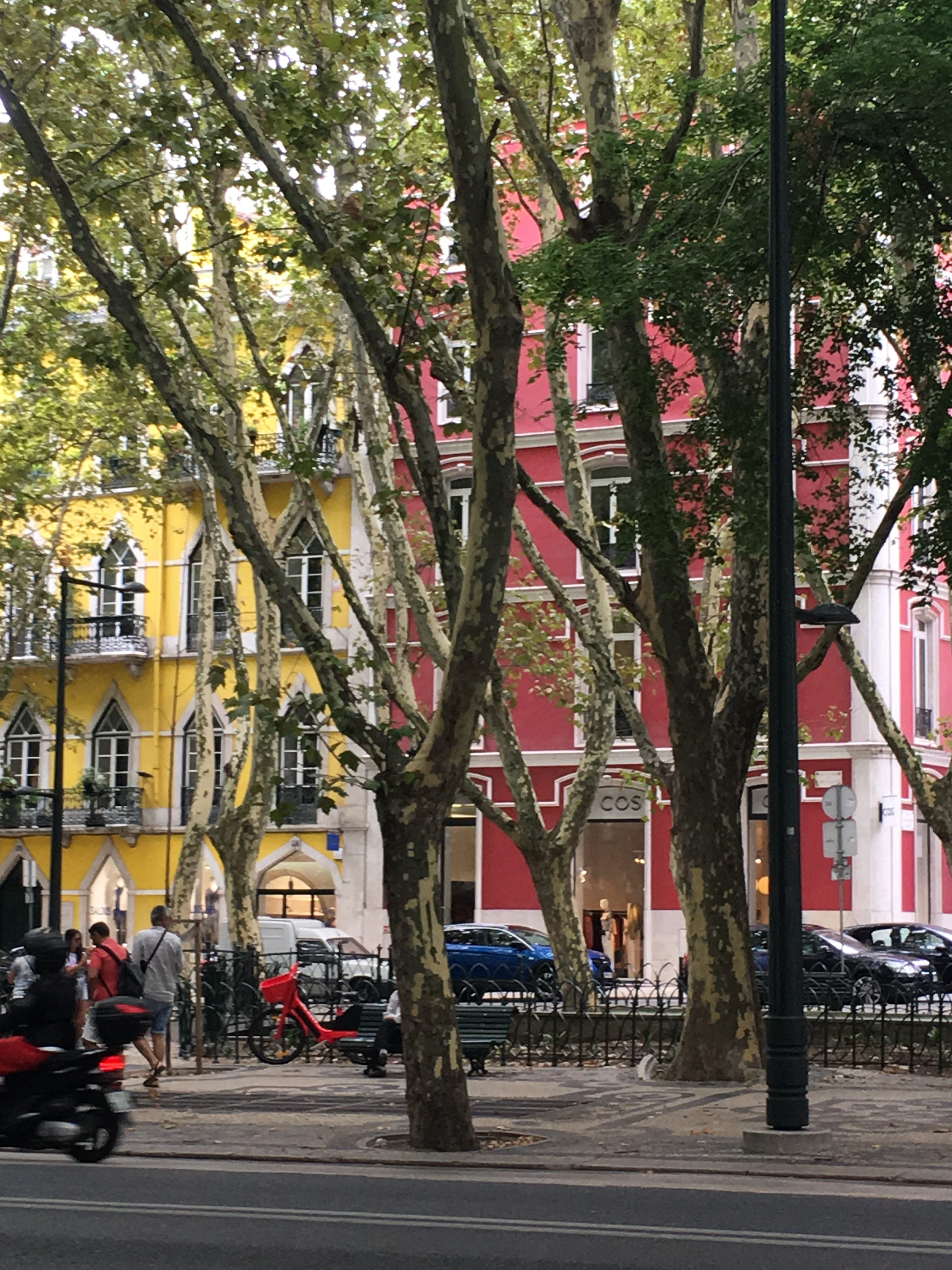
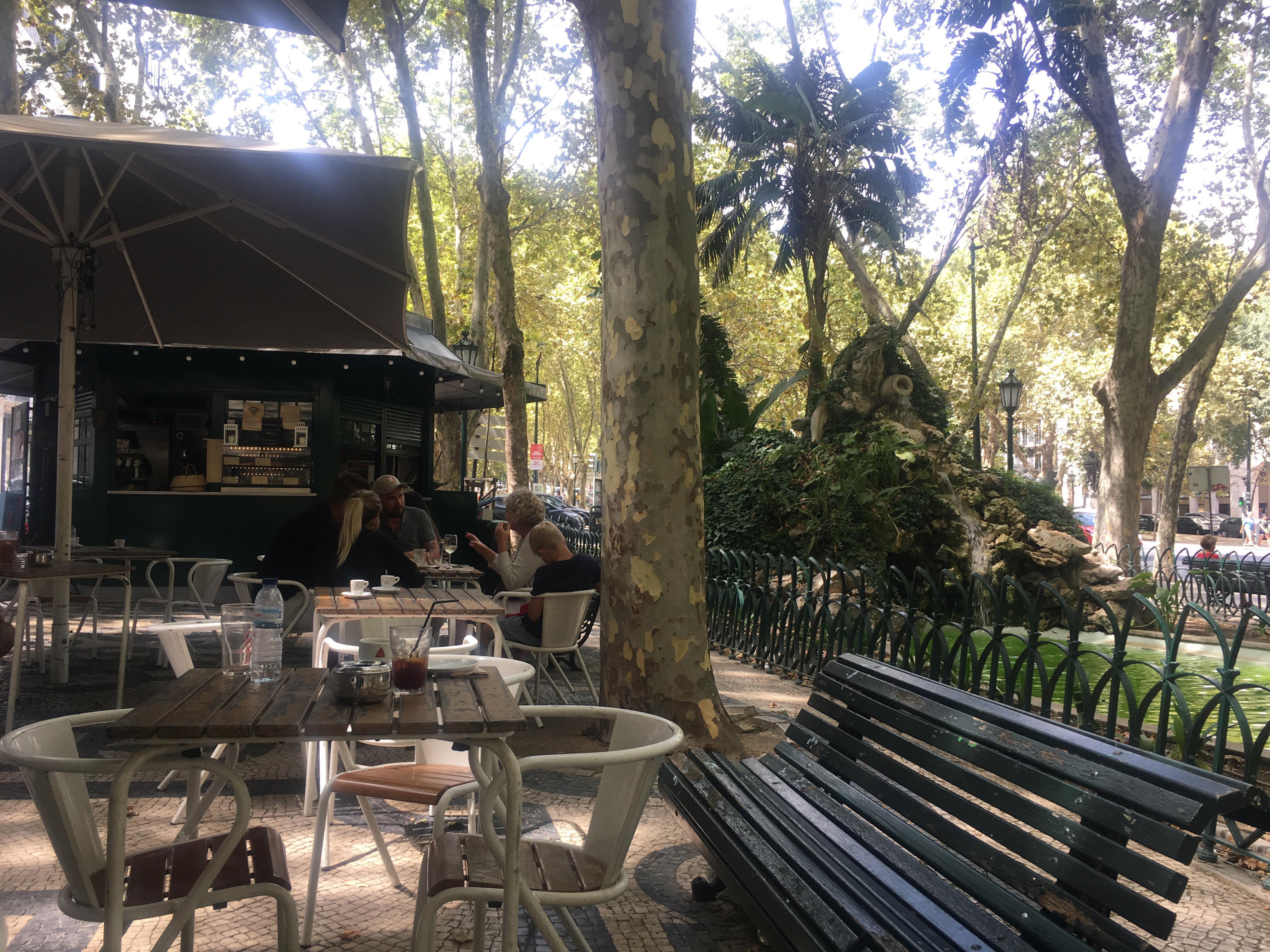
With only a few days in Lisbon, it was obvious that we were only going to scratch the surface of one of Europe’s oldest cities.
As a result, we decided to take the soft option and book some tours. We opted for Sandemans walking tour. We had taken a couple of their tours earlier in our trip and had found them to be good, so we decided to give them a go in Lisbon.
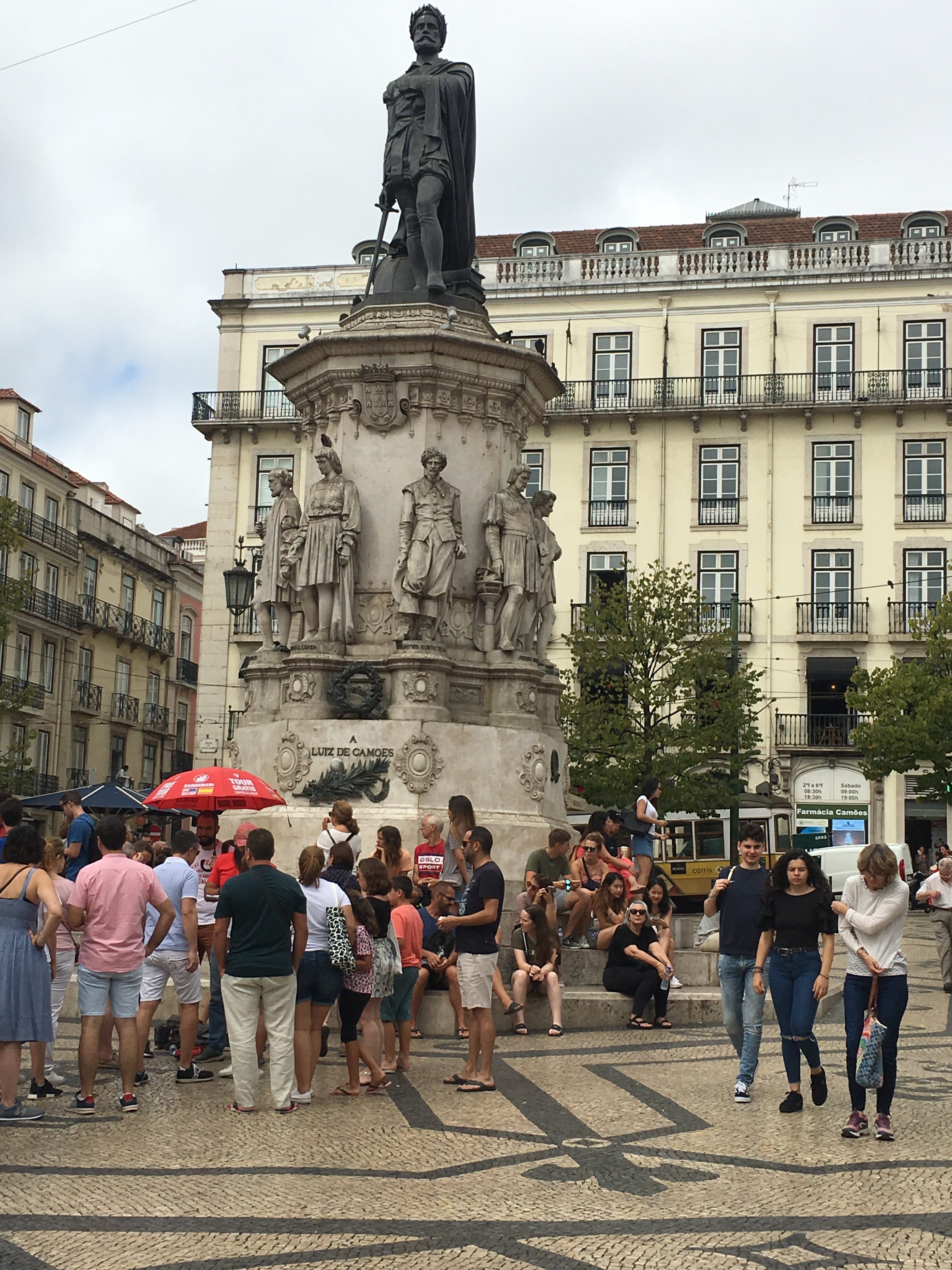
Cameos Monument in Largo de Cameos
Their tours generally start in a central location which in Lisbon was the Cameos Monument in Largo de Cameos. Getting there provided an opportunity to take one of the funicular in Lisbon. Lisbon is hilly so taking the funicular or one of the many elevators in the Metro make it much easier on your legs. You can take the historic elevator to but it involves a long queue!
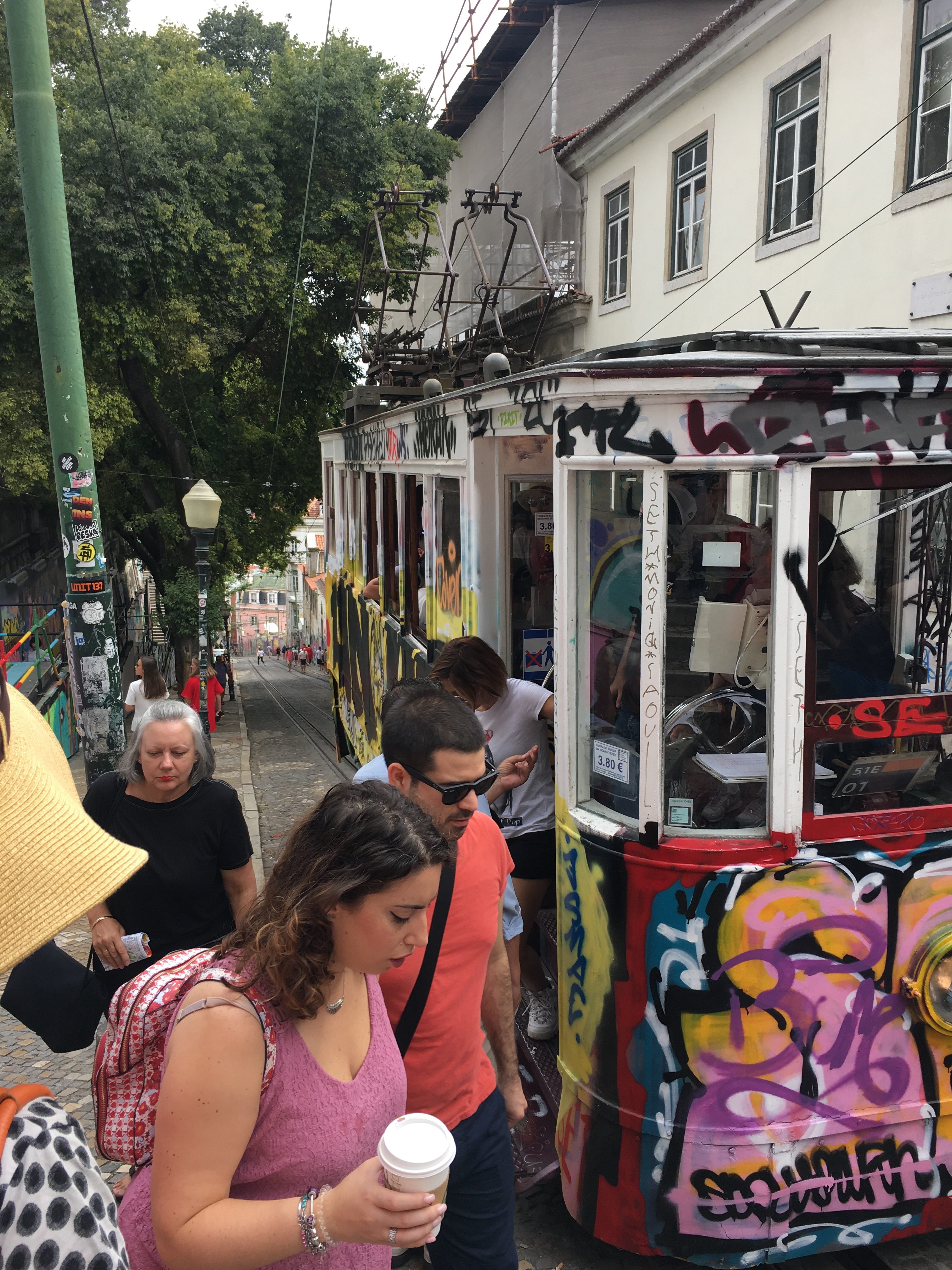
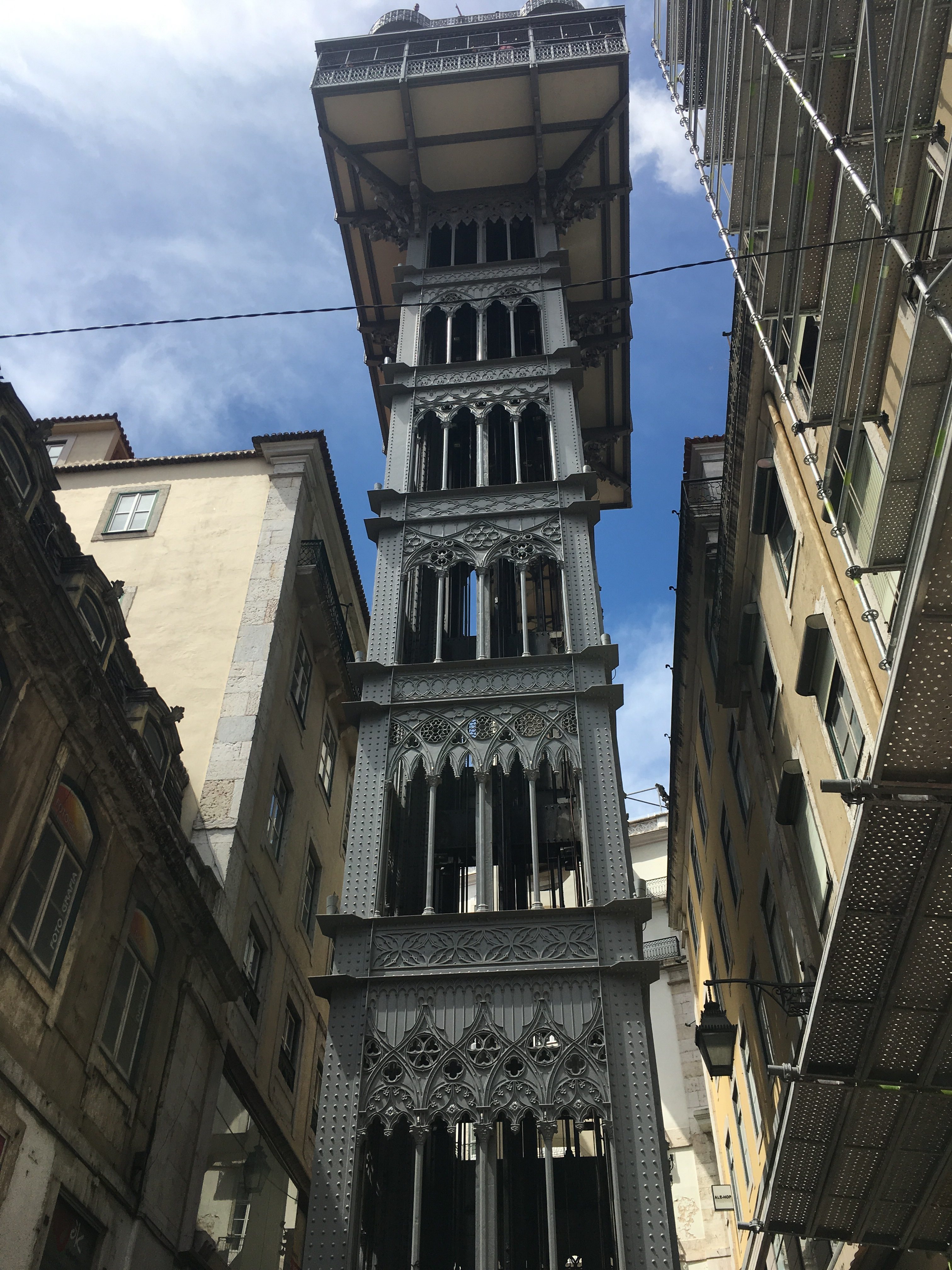
A free walking tour (not really free – it is a tip based tour) is a good way to orientate yourself in a city when you are not familiar with it. Our guide was a history buff which just suited us. This was no “if you look over here you’ll see” but rather the story of people places and events in Lisbon’s history. For someone who had almost know knowledge about Portugal this was just ideal.
Our guide told us about famous Portuguese writers, the earthquake in the 1750s, the dictatorship and the Revolution. It was all told in a social context making it all the more interesting. Hearing stories of the period pre-revolution including the one hour government in the politically unstable period leading up to the Salazar dictatorship gave us an understanding of why the dictatorship was easier for the public to swallow in the early days. Our guide told us about the secret police and their extensive powers to detain and “question” which did not sound pleasant at all and then about the Revolution.
The revolution ended at what is now the Museum of the National Republican Guard on 25 April 1974. We made a visit to the museum as suggested by our guide.As suggested by our guide. It was an hour well spent, telling the story of the building , the history of the guard during the dictaotrship, at the time of the Revolution and beyond. For 2 Euro it was definitely worth a visit.
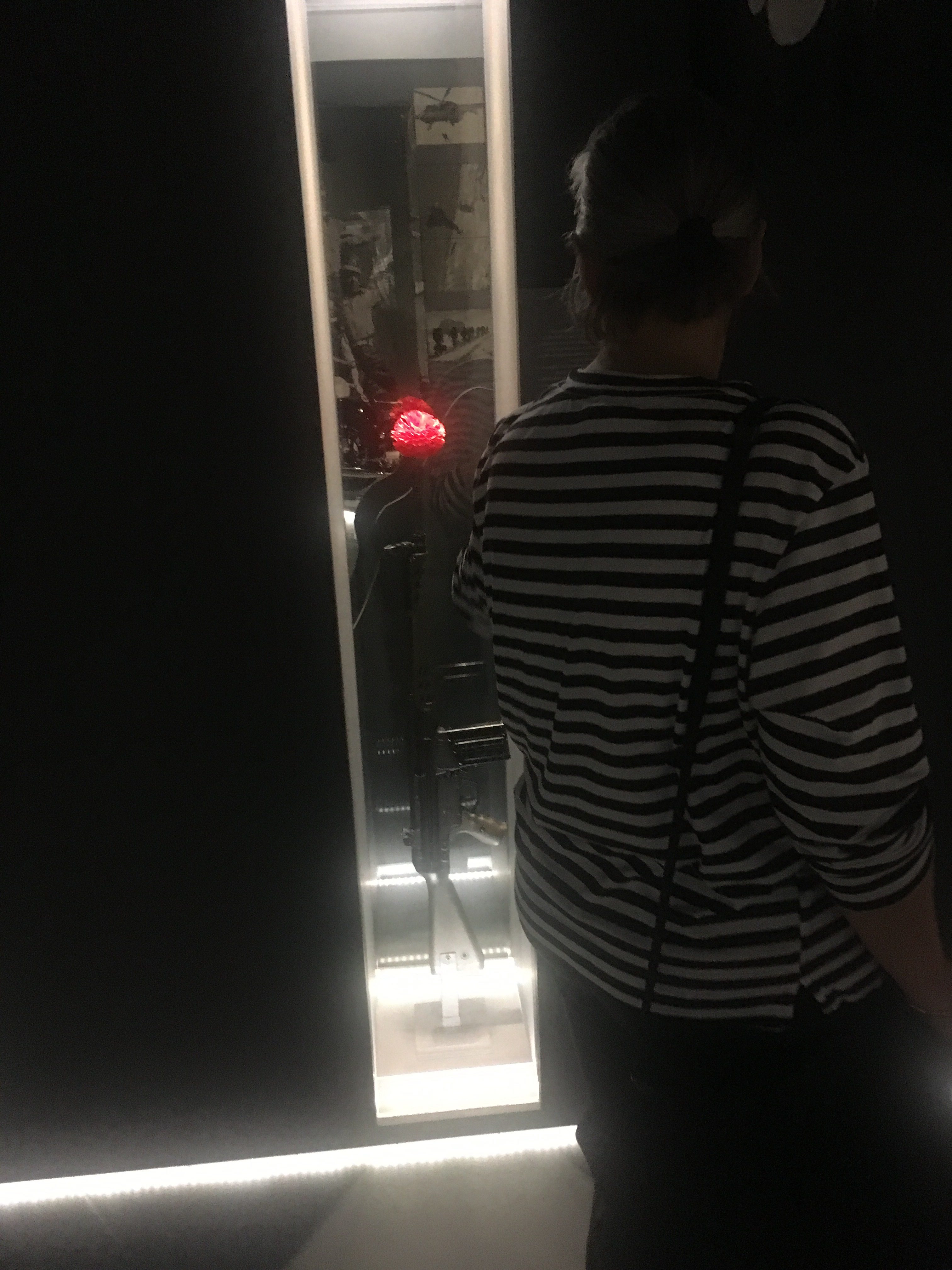
The revolution is known as the Carnation Revolution because a florist wanting to do something for the revolution gave the soldiers all of her red carnations which led to other florists doing the same. They pinned the carnations to the soldiers lapels and put the stems into the gun novels. 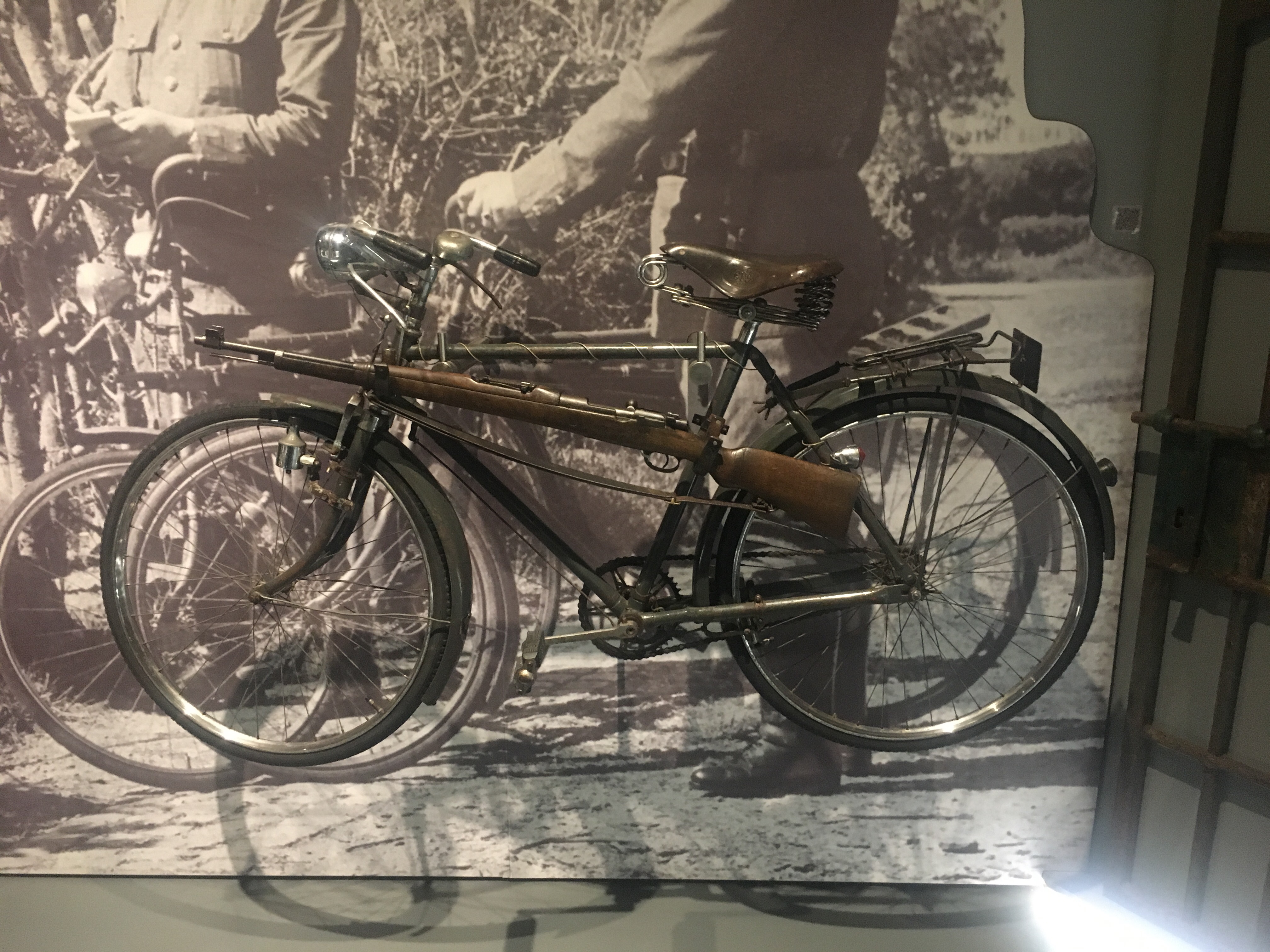
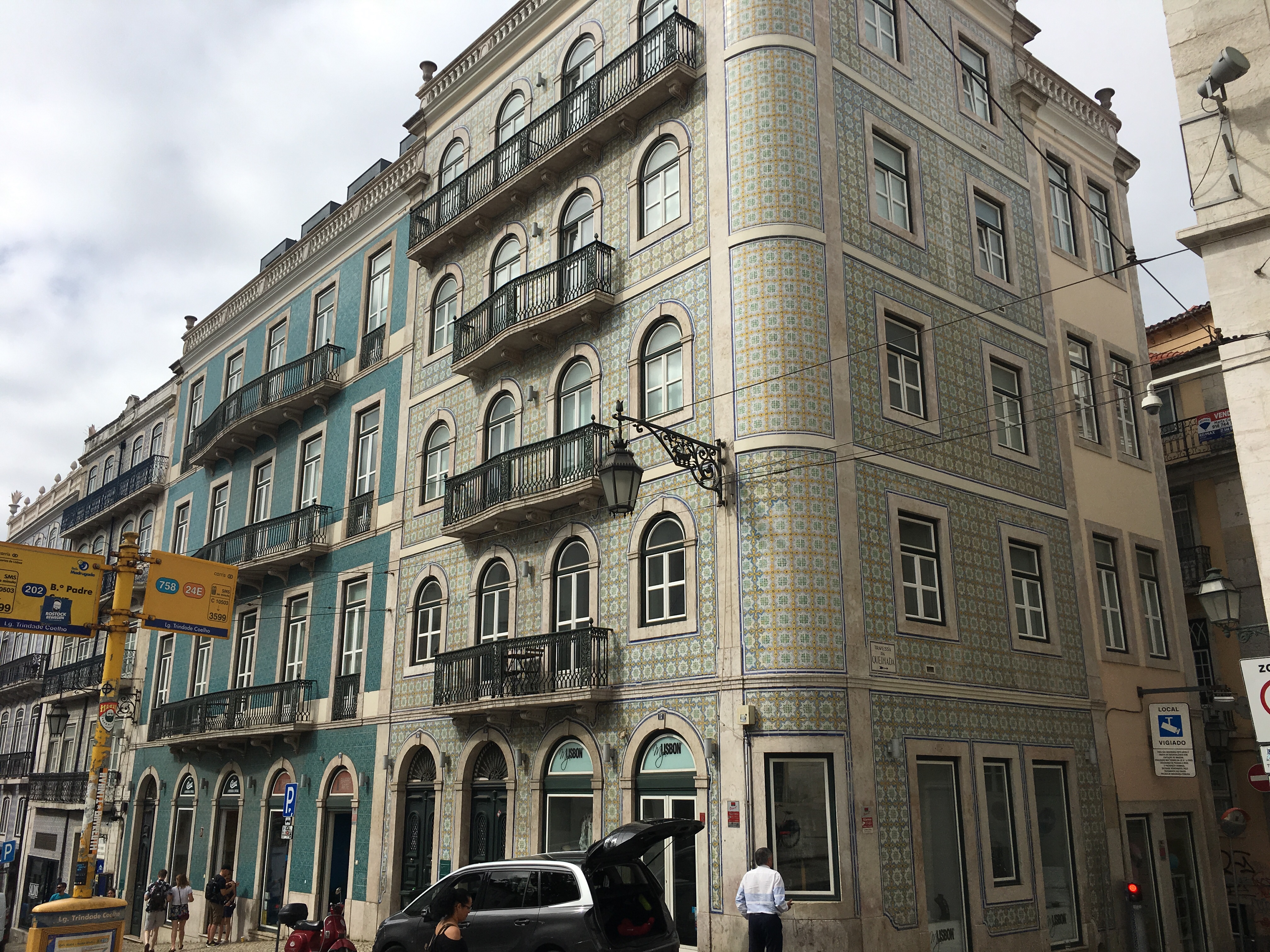
Typical architecture of Lisbon
I was pleased our tour stopped for coffee outside Benfica Football Club’s city store. I knew about the team from there European success at the time Eusebio played for them. I’d only been listening to a program about him a week or so before, so, going to the store was interesting for a sport nut like me. I bought a scarf and then it was on toward the Praça do Comércio and the riverbank. Eusebio, Portugal’s greatest player until Ronaldo, was a victim of the dictatorship being prevented from playing outside of Portugal during the prime of his career.
Amazingly a day or so later we met his cousin, the manager of a local bar.
The square was formally the royal palace but was decimated by the earthquake. It has been rebuilt and is a delightful open space with the usual cafes. The arch celebrates the rebuilding of the city and the statue of the king pokes fun at him. The horse is not much more than a show pony and the snakes he is striding over are there not to signify strength but keep the pigeons away (or so our guide told us).
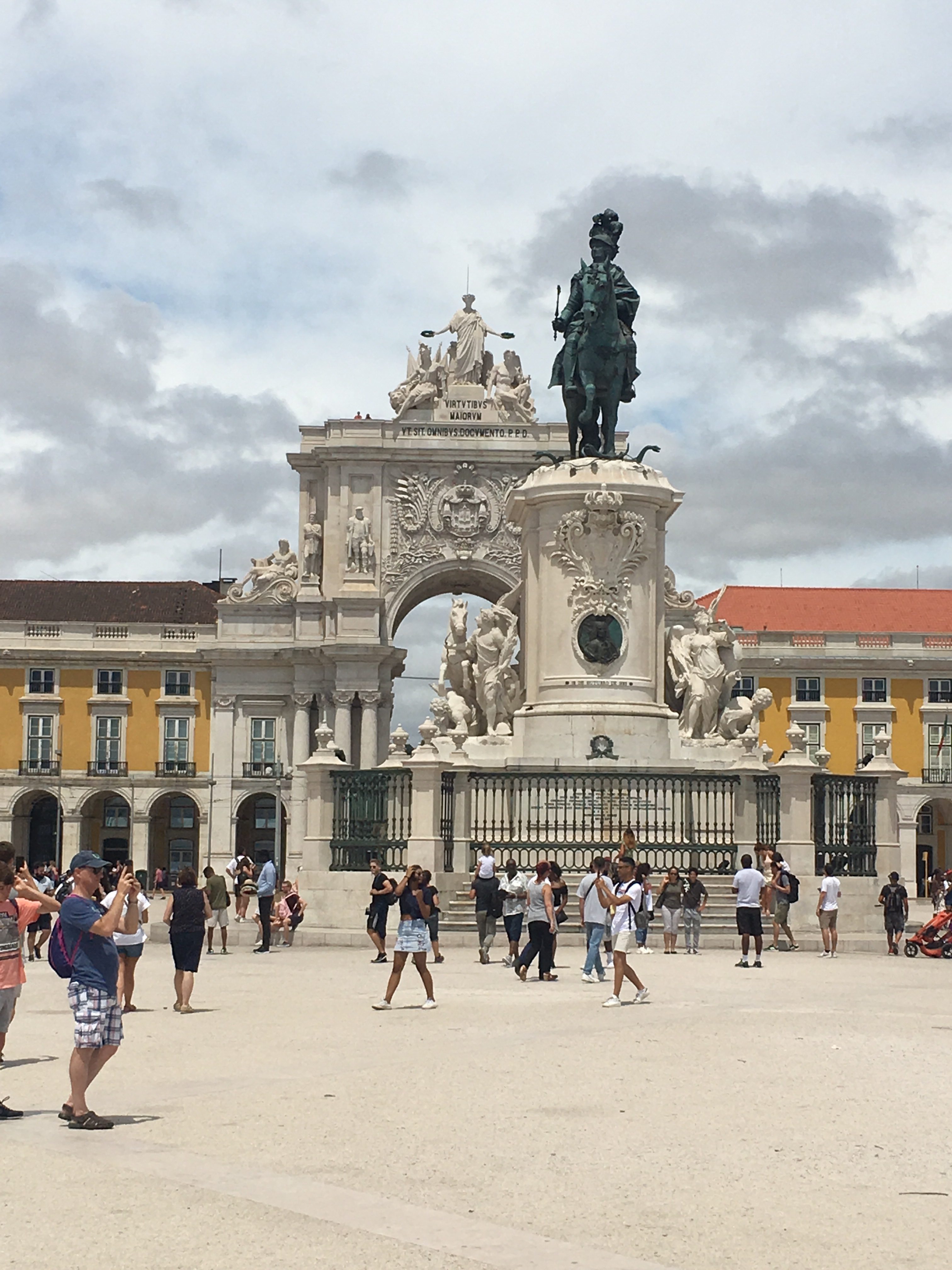
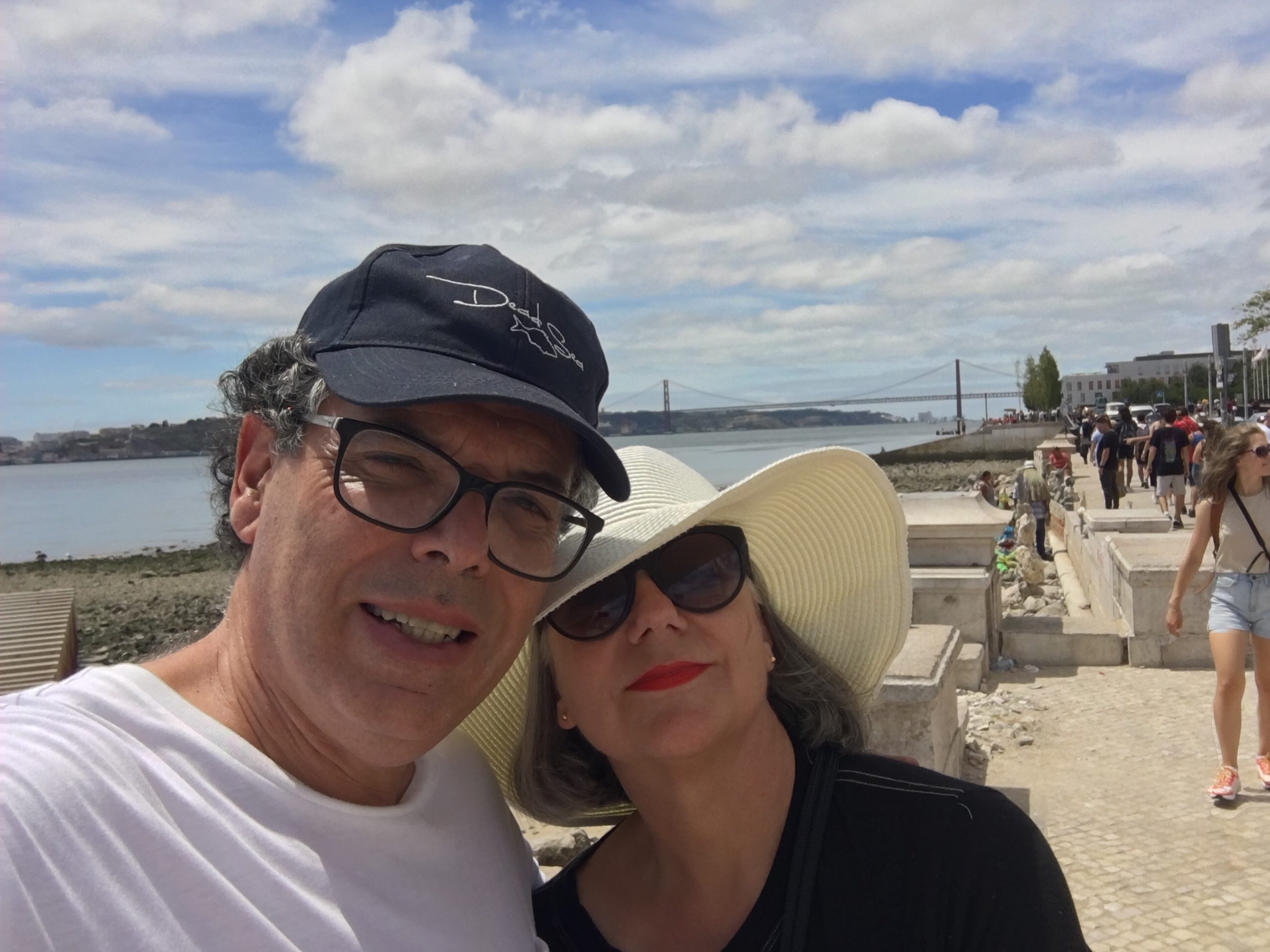
The tour left us in the square, conveniently by a metro stop that took us back to our hotel.
The square was also the meeting place for a tour of Alfama that we also booked.
Alfama is an old part of the city and was largely spared the decimation of the Earthquake. The Earthquake hit Lisbon on All Saints Day, 1 November 1755 while many were in church. The devastation was enormous, yet Alfama was left relatively untouched by it. This must have been quite confusing for such a devoutly Catholic country like Portugal, as it was the “Red light District” and refuge for those less devout members of the Lisbon community.
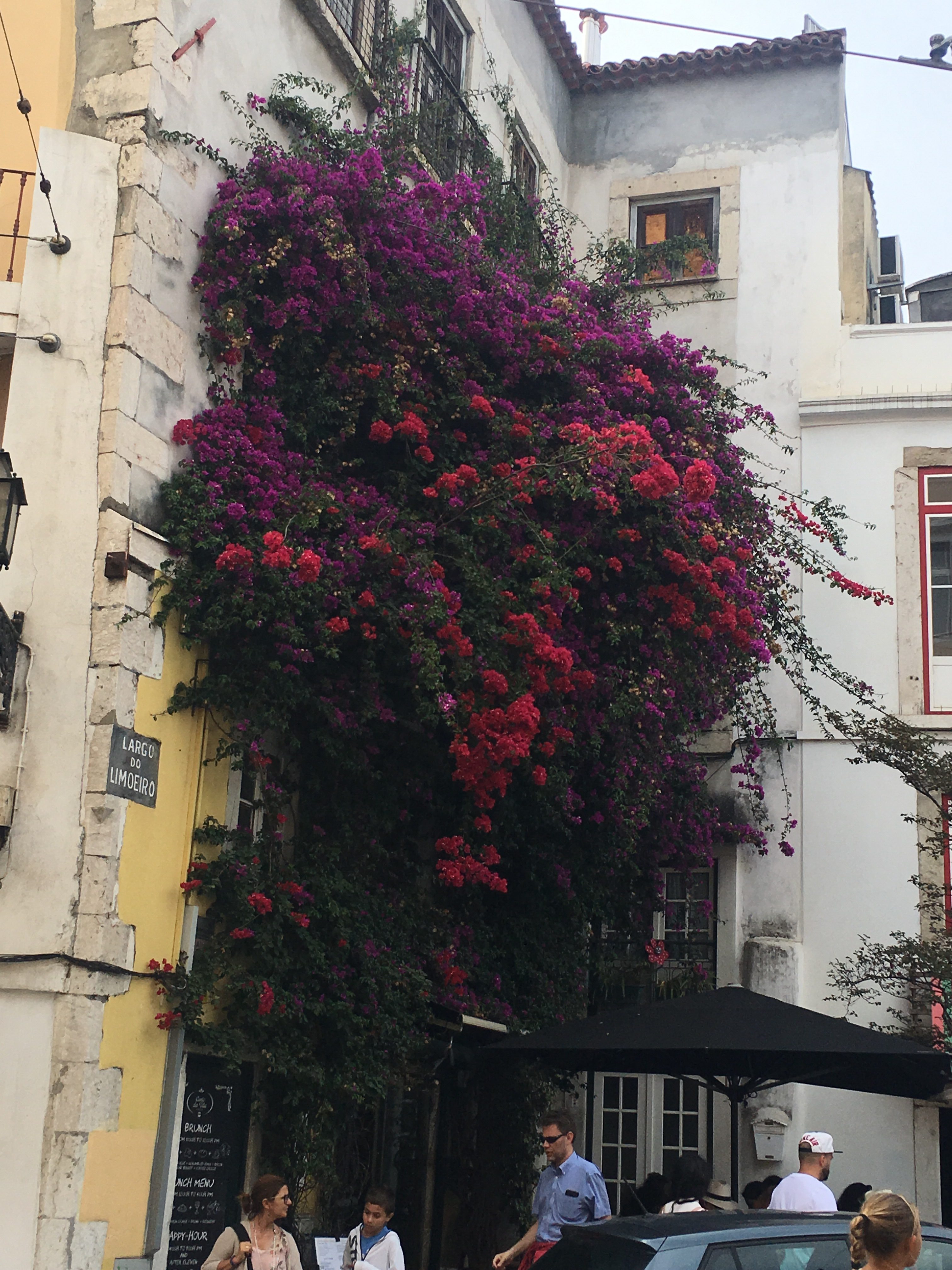
As with our previous tour, our guide gave us a social history that included green wine from Eusebio’s cousin’s bar. As well as its sporting connection, possibly only of interest to me, the bar had been operating in its current location for hundreds of years and was a sailors haunt back in the day – it was easy with the benefit of our guide to visualise what it must have been like with sailors cramming the streets.
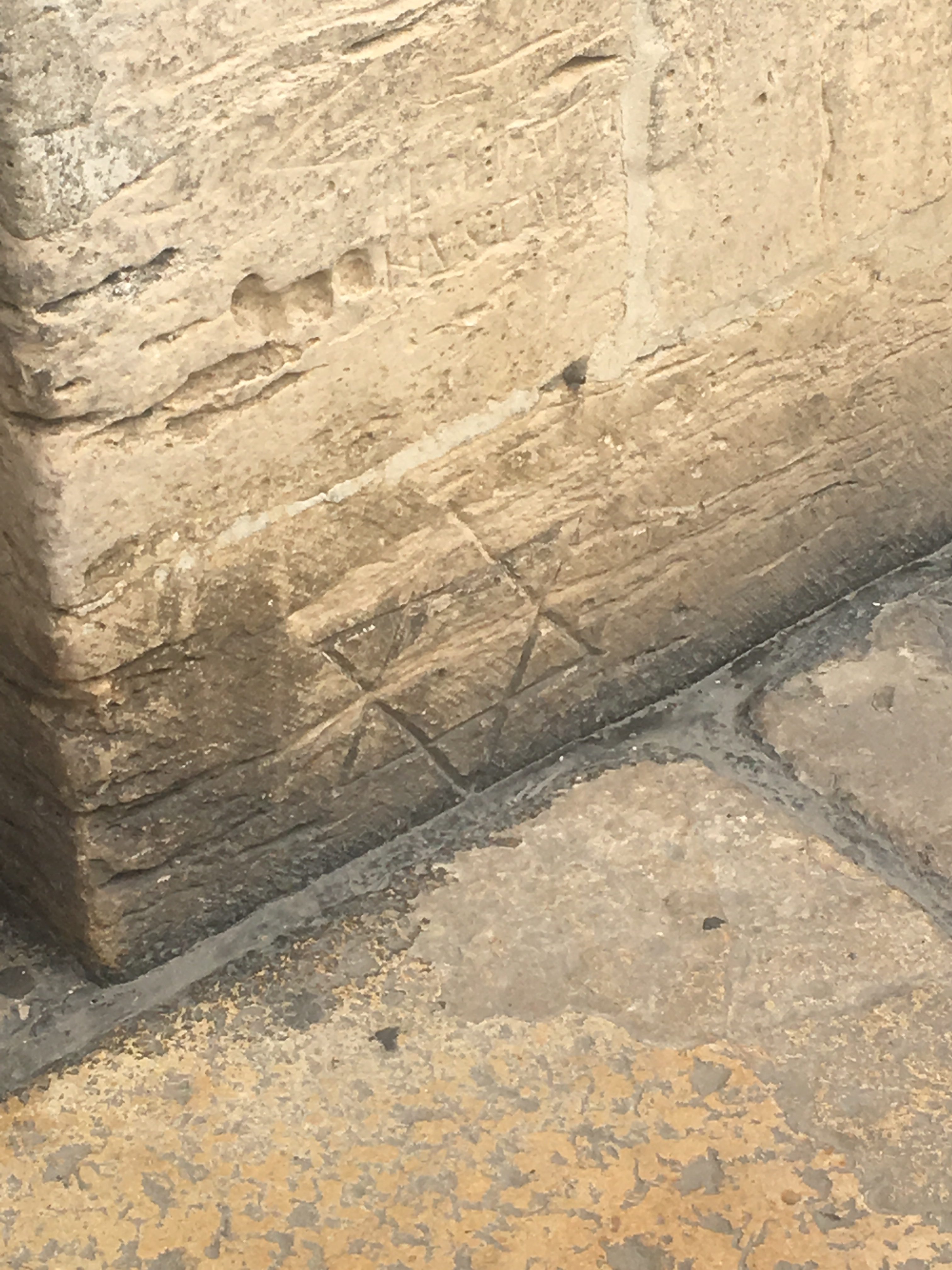
As we walked the narrow streets stopping by St Anthony’s cathedral (we wandered through the church on our way home). Our guide pointed out a Star of David that had been cut into the stone. It provided an opportunity to hear about the persecution of Lisbon’s Jews at Easter of 1506.
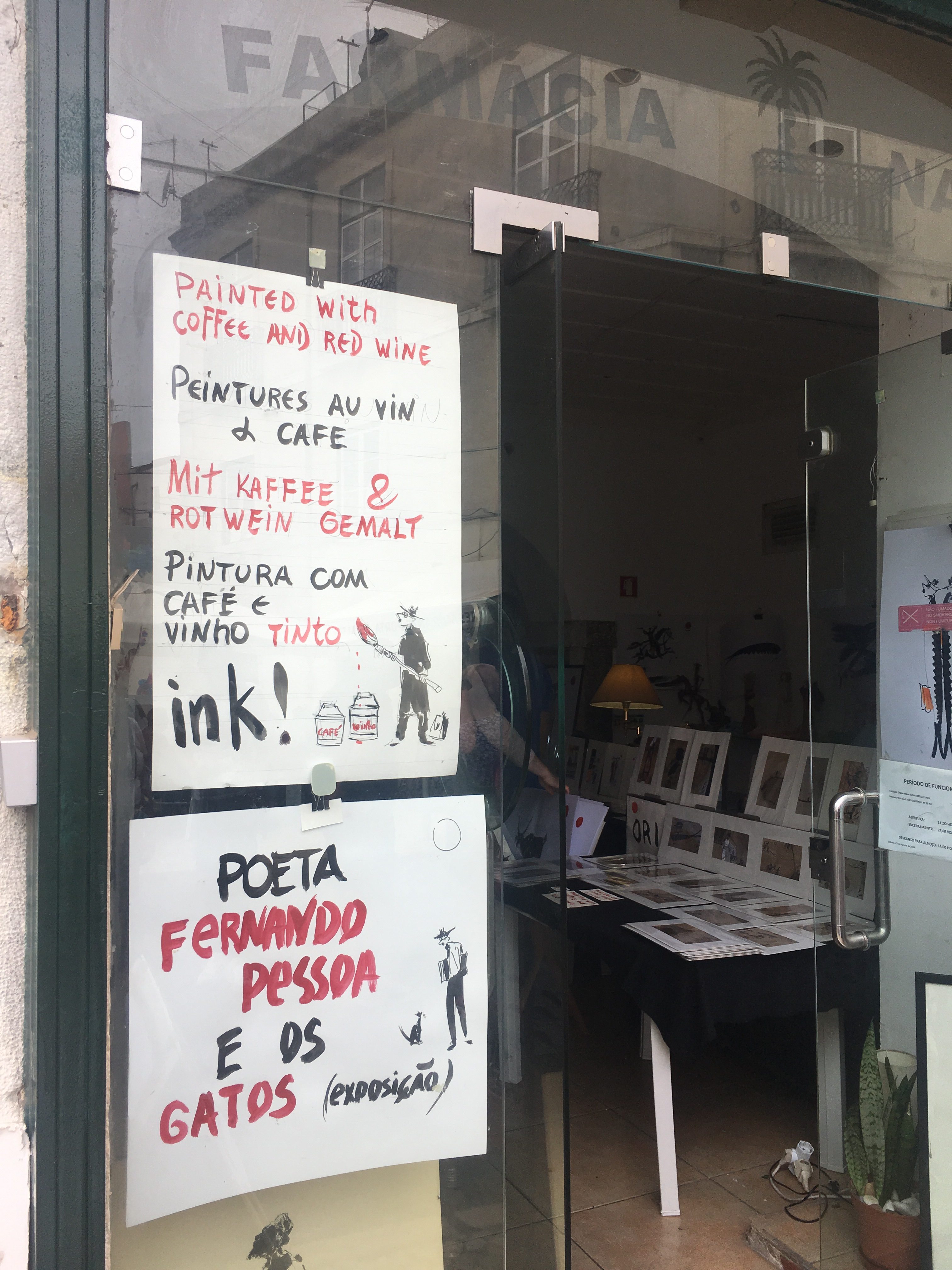
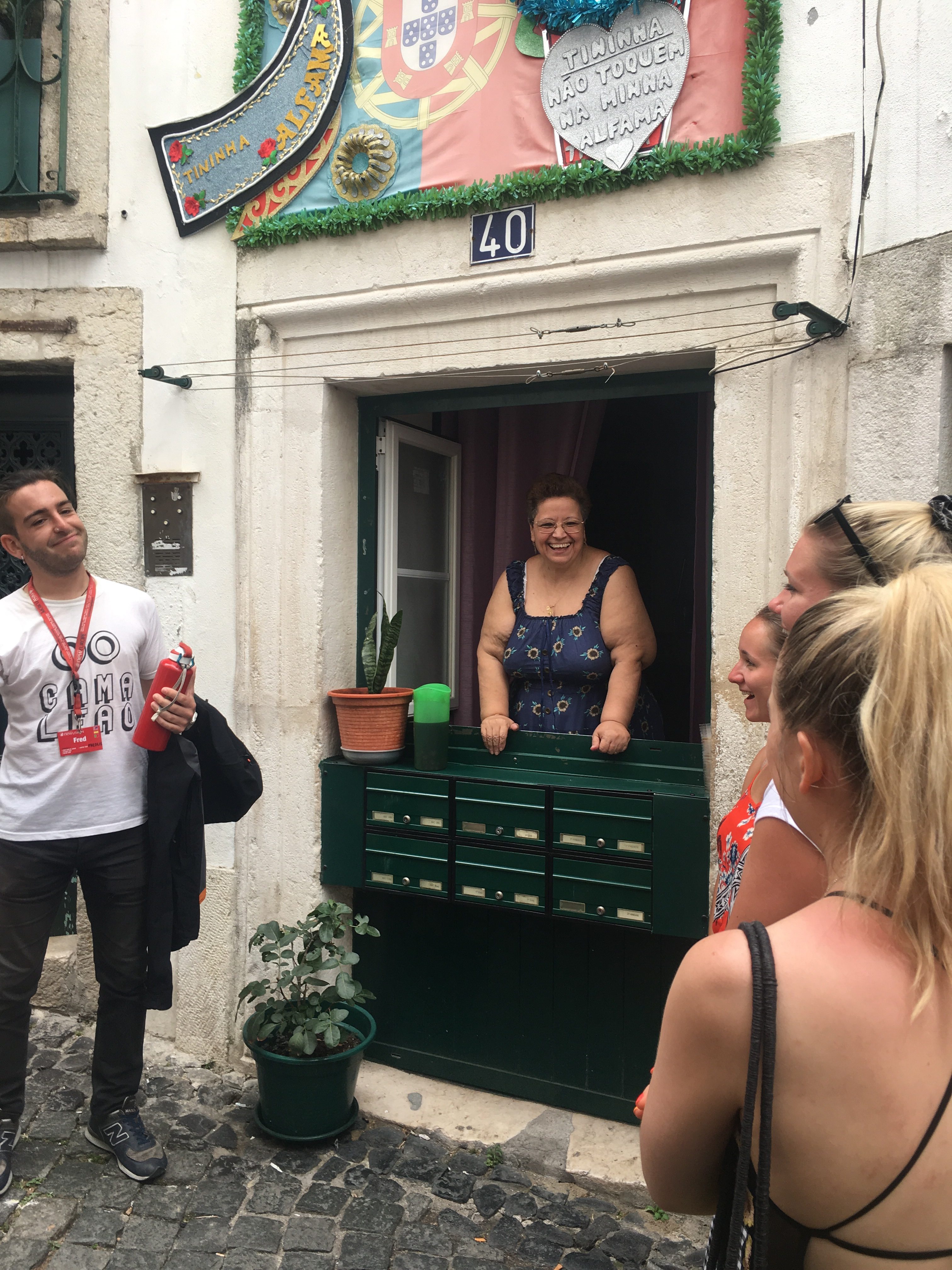
We also visited an art shop owned by an elderly Mongolian gentleman who painted with coffee and red wine. We stopped at a window where a lady dispensed cherry port wine in chocolate cups. The stops provided the colour of Alfama, as did stories of celebrated locals. If you visit the area it is worth looking at the plaques that include pictures and stories of these characters. We stopped by the public laundry still in use today as many of the local appartments still don’t have washing machines.
Our walking tour culminated above the river and in a square where there was a mosiac of our favourite Saint, Santa Lucia!
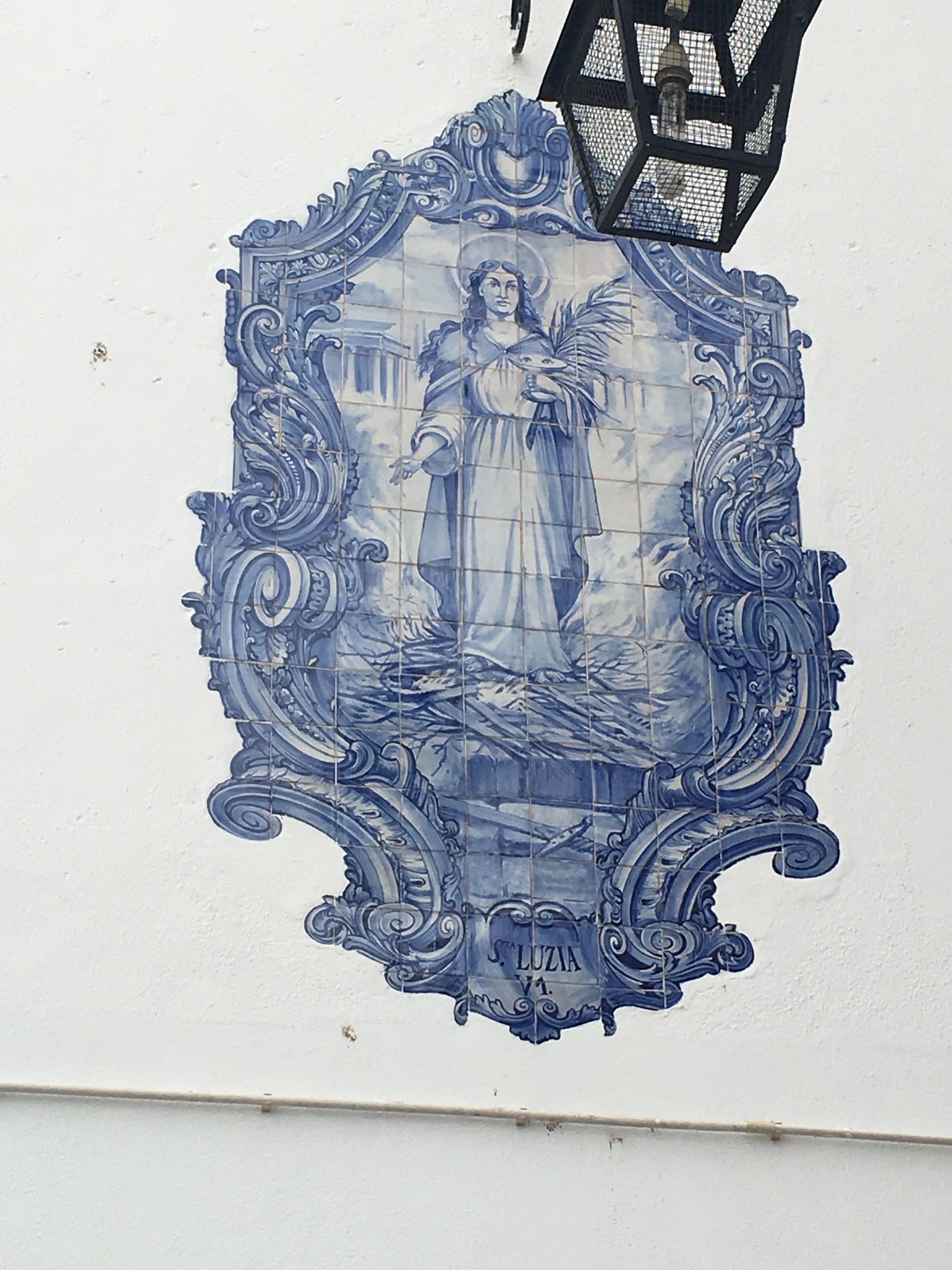
St Lucia Mosiac
With just a few days here, we’d seen all we could but had barely scratched the surface. We will need to come back
Port for afternoon tea? Lovely.
Very civilised.
For those of us of a certain age, Eusebio is still Portugal’s best ever player. The prancing pony doesn’t even come close 😉